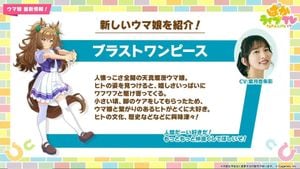Victims of ATM Fraud Need to Watch Their Cards
Recent reports highlight alarming trends involving fraudulent activities at ATM machines, often targeting users who rely on cards provided by the Banco del Bienestar. These scams take advantage of unsuspecting individuals, emphasizing the need for vigilance when conducting transactions.
According to the National Commission for the Protection and Defense of Users of Financial Services (Condusef), individuals using ATMs must exercise caution to avoid becoming victims of theft, extortion, or scams. The latest scheme involves perpetrators tricking victims by feigning technical issues with ATMs. They falsely advise users to clean their cards, claiming this is the reason for their inability to access cash. During this interaction, the fraudsters quickly swap the genuine card with one of their own, leaving the victim unaware of the switch.
Once the criminals acquire the legitimate card, they often make immediate purchases at nearby stores before the card can be reported lost or stolen. Users are frequently oblivious to the card switch until it’s too late.
This pattern adds to the many strategies criminals employ to gather sensitive information from users. Techniques include capturing users' Personal Identification Numbers (PINs) through hidden cameras or binoculars, or using distractions like false signs to obscure modifications made to the ATMs. Methods can even include devices meant to trap cards inside the ATM.”
To counter these threats, the Condusef has outlined several safety measures for ATM users. They recommend avoiding poorly lit or isolated ATMs, particularly at night. Users should refrain from using ATMs if they notice suspicious individuals nearby or within the booth.
It's advised to approach the ATM with your card already visible to minimize distractions and avoid delays. Observing the ATM for any unusual features or alterations is also wise. Users should remain cautious of any signs asking for confidential information since institutions never solicit such data through notices at machines.
Importantly, users are urged not to accept assistance from strangers when encountering problems with machines; instead, they should cancel transactions and seek help from bank personnel instead.
Meanwhile, the Banco del Bienestar has reached out to beneficiaries of social programs who receive financial support through the Bienestar card. They’ve reminded users to seek help only from bank staff and to ignore offers of assistance from those they don’t know.
For many older adults receiving pensions through the Bienestar program, the Banco del Bienestar card is both unique and non-transferable. Recipients must visit their respective bank ATMs bimonthly to obtain cash assistance.
Beneficiaries are also advised to regularly check their cards for validity. Under the recent guidelines provided by the social inclusion department, older adults need to pay attention to certain signs indicating whether they must replace their Bienestar cards.
For recipients using the Bienestar card for years, it’s important to stay alert to specific conditions under which they might need to request replacements. New Bienestar cards, featuring updated designs and backgrounds, are continually going out, particularly as the start of 2025 is ushering new transitions.
The Fundación de Bienestar has begun issuing these new cards, described distinctly due to their white design, complementing the branding of the government under President Claudia Sheinbaum Pardo.
Despite these new deliveries, the Banco del Bienestar has confirmed cards issued during President Andrés Manuel López Obrador's term remain valid. Users do not need to get replacements until their cards approach expiration dates.
Each Bienestar card features its expiration date visibly on the front. For example, if the card indicates 08/26, it means the card is only valid until August 2026, and holders should request new cards before this date to avoid disruptions to their financial support.
Importantly, as long as the Bienestar card has not reached its expiration date, users can continue making withdrawals and purchases at participating businesses.
Beneficiaries, especially those aged 30 to 64, should also prepare their INAPAM credentials to meet specific requirements for financial aid.
The Banco del Bienestar remains committed to protecting its users from fraud, ensuring they receive their entitled financial support safely. The vigilance of users, combined with secure banking practices, continues to be emphasized.



